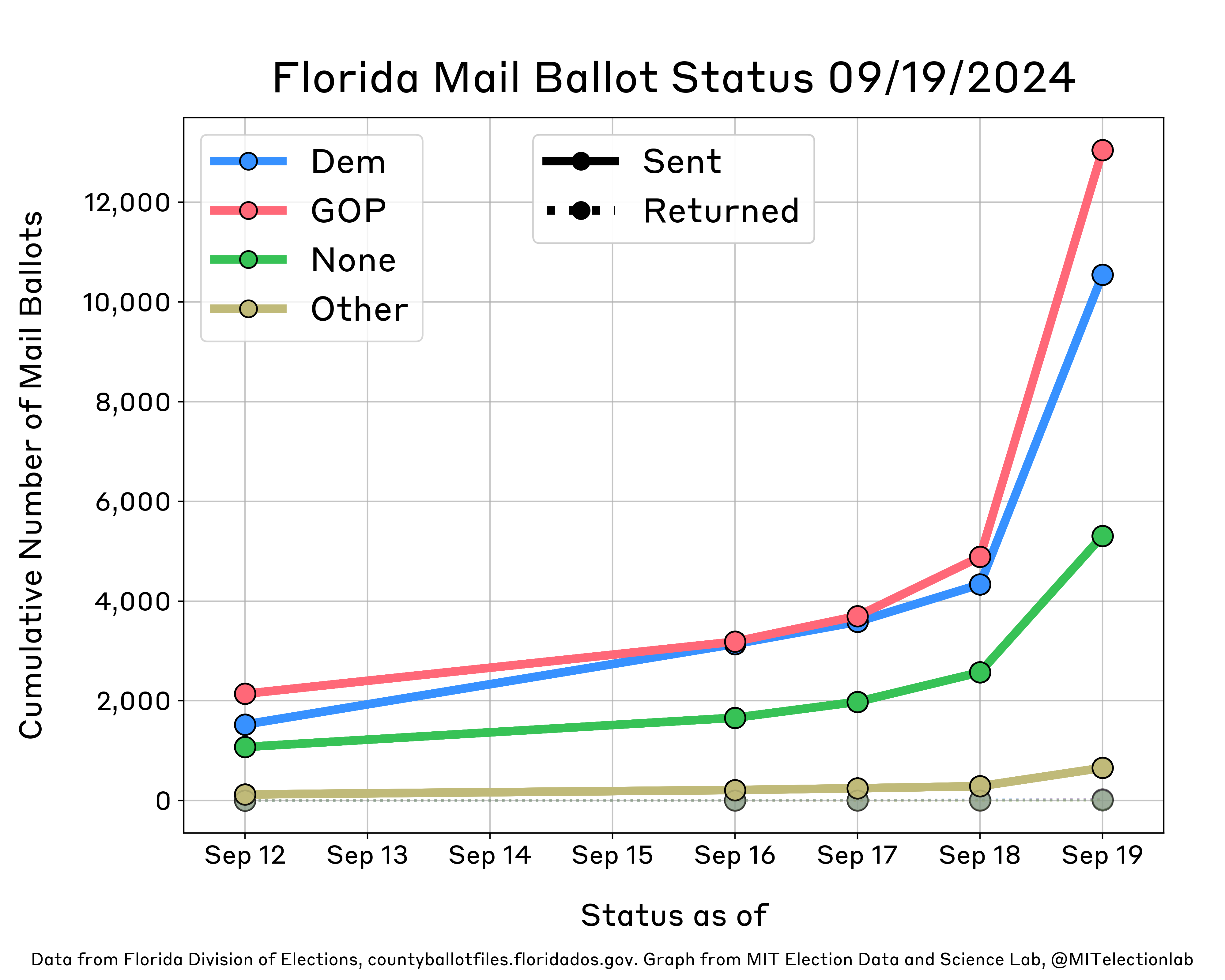Key State
Florida
Memos
Florida held its biennial state primary—including contests for Senate, the federal House of Representatives, the state legislature, and local offices—on August 20. Unlike the March 19 presidential preference primary, state primaries were held for both major parties, and over three million voters showed up to the polls to make their voices heard. In this brief update to our mid-August Florida report,1 we first discuss the three major headlines from the election, explain what the data show us about turnout in the state primary, and provide an update on Florida voter registration.
Following two decades as one of the nation’s premier swing states, Florida was hotly contested in the 2020 presidential election. Donald Trump ultimately won his home state by over three percentage points, a notable step to the right after the former president won the state by just over one percentage point in 2016.
Florida’s provision of data on first-time voters is of particular utility. Using the May 2024 voter file, we discover that the rejection rate for mail ballots in the 2024 Republican presidential preference primary was 2.5 times greater for first-time voters than for returners. This is especially noteworthy because the Sunshine State has entered the 2020s as one of the fastest-growing states in the nation, driven in part by domestic migration, which has significant implications for election administration and outcomes.
Other aspects of voting behavior and policy changes in Florida have contributed to a changing election landscape over the last several years. Major shifts in voter registration and vote mode trends since 2020 may affect how Floridians vote in the upcoming election. This report will analyze the 2020 primary and general elections before turning to contemporary controversies relevant to the 2024 election in Florida.
State Resources
Data Visualizations
Voter Registration
Last updated: October 16, 2024
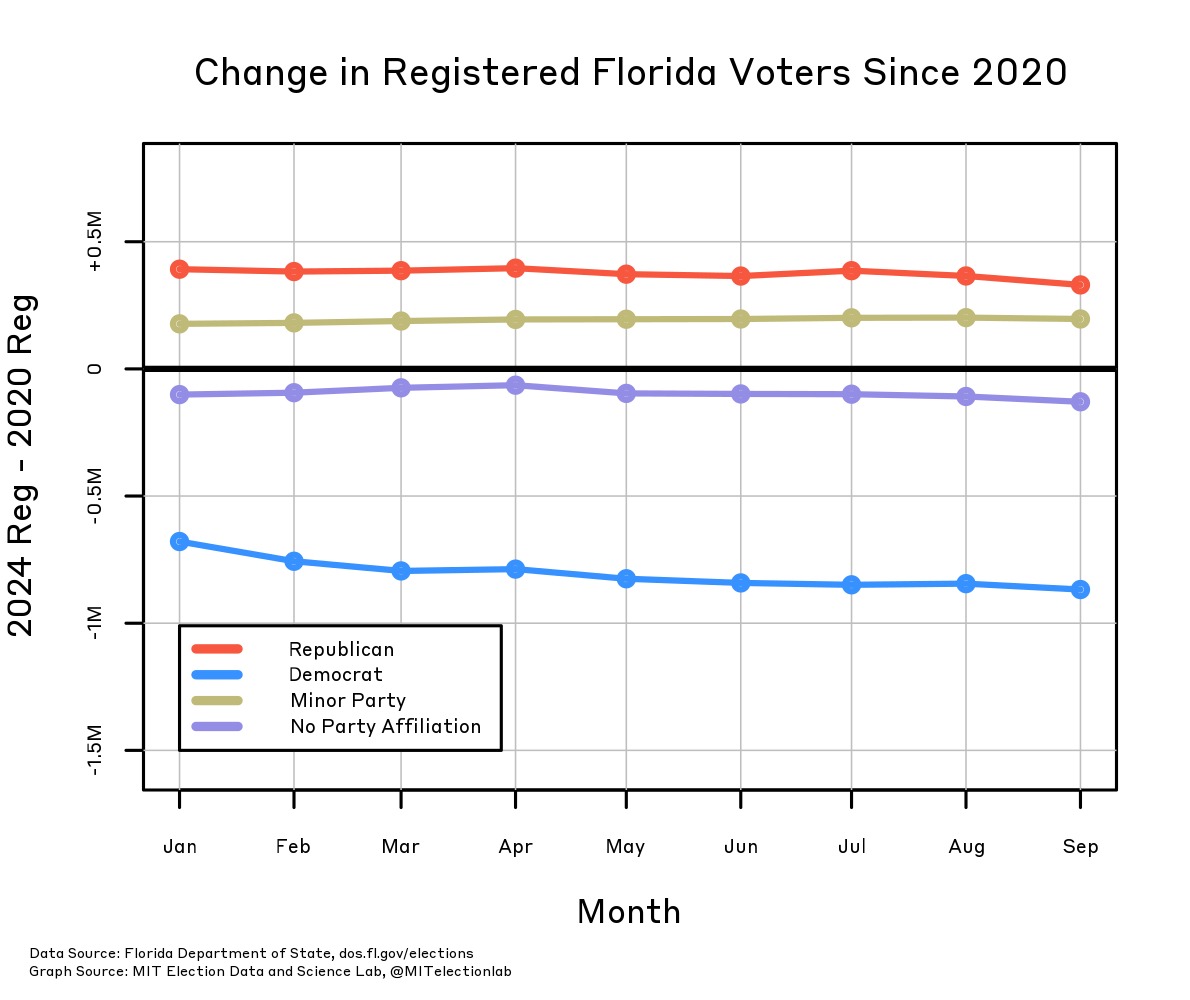
September 12, 2024
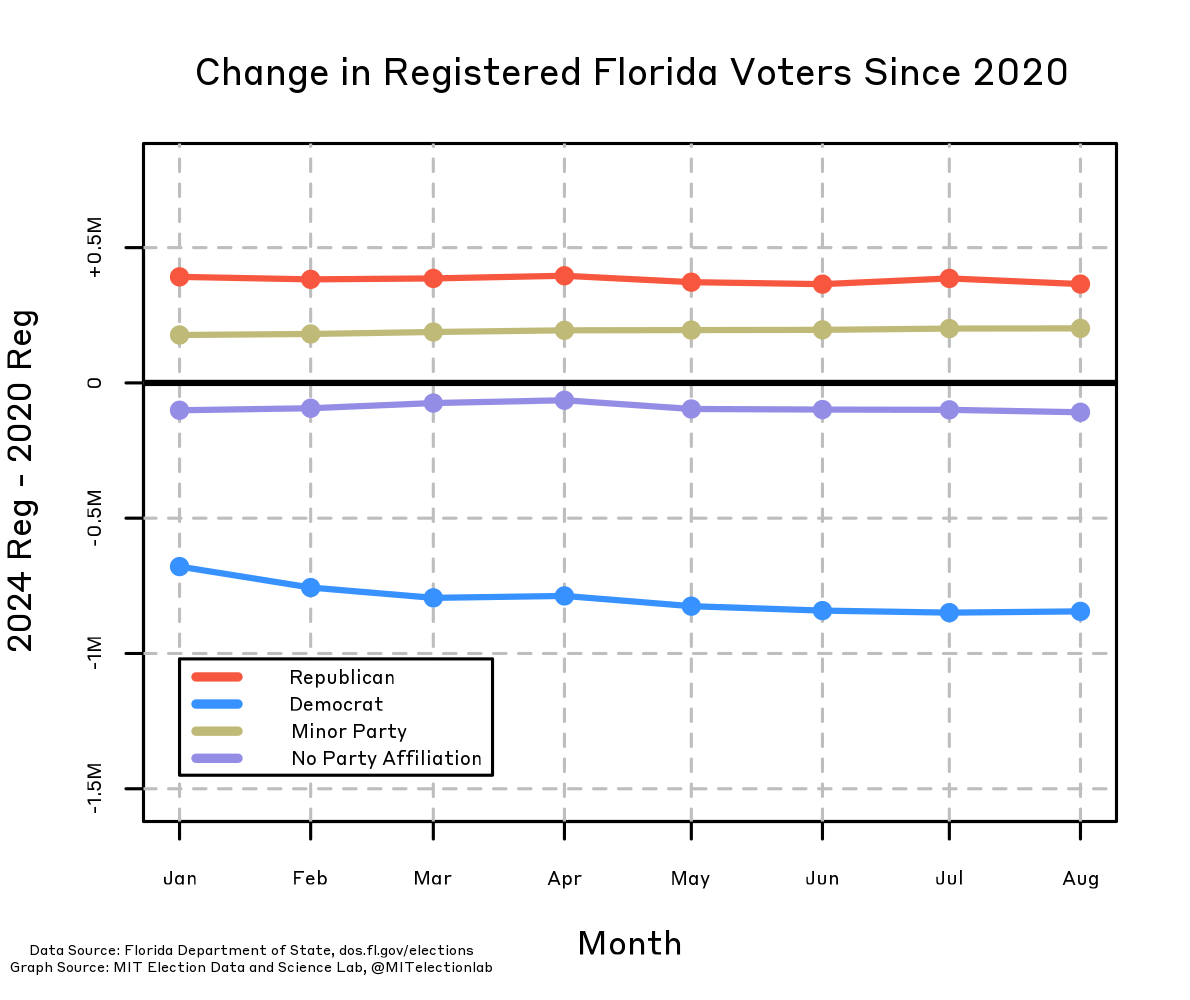
Mail Ballot Status
Last updated November 4, 2024
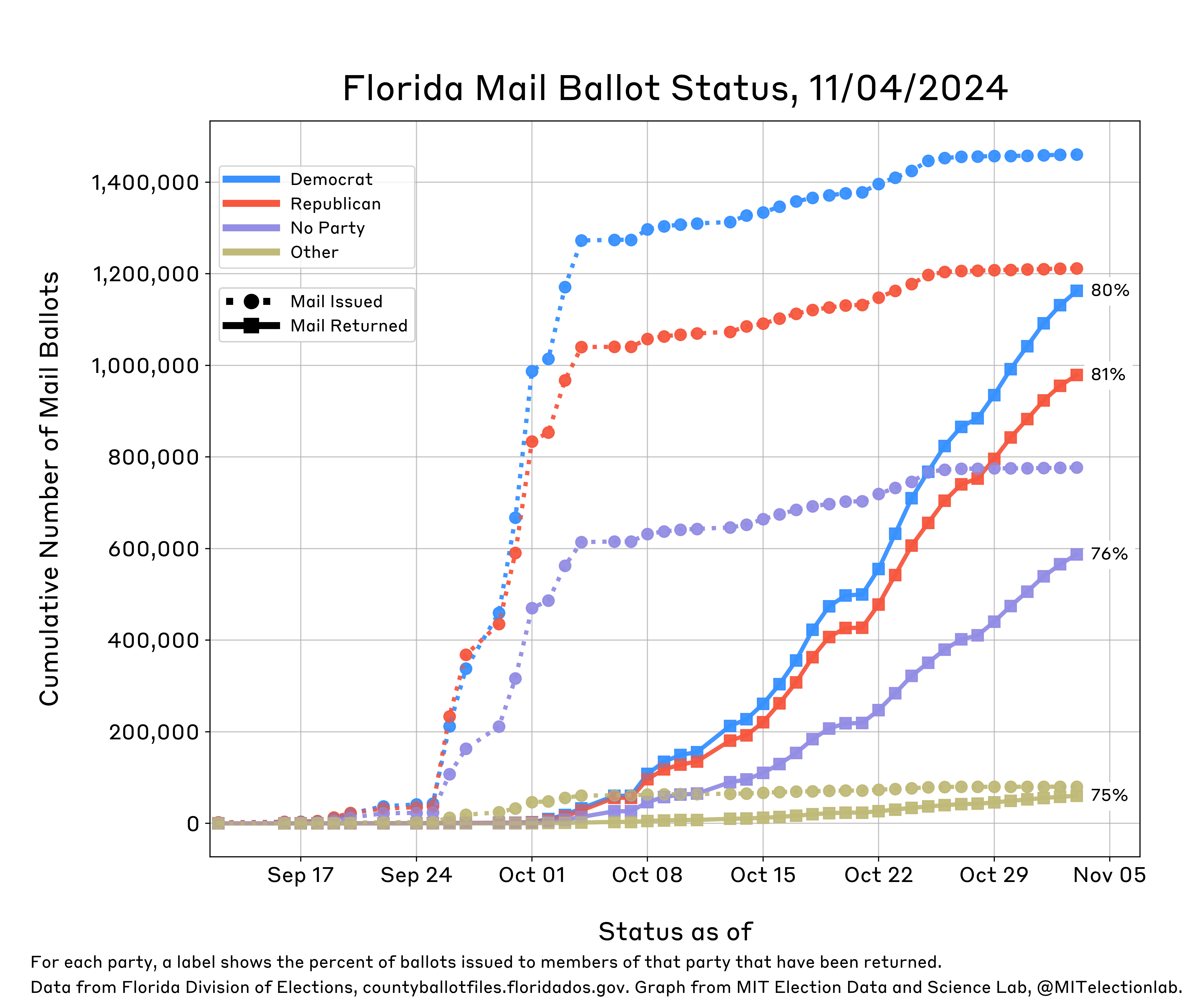
November 1, 2024

October 31, 2024

October 30, 2024
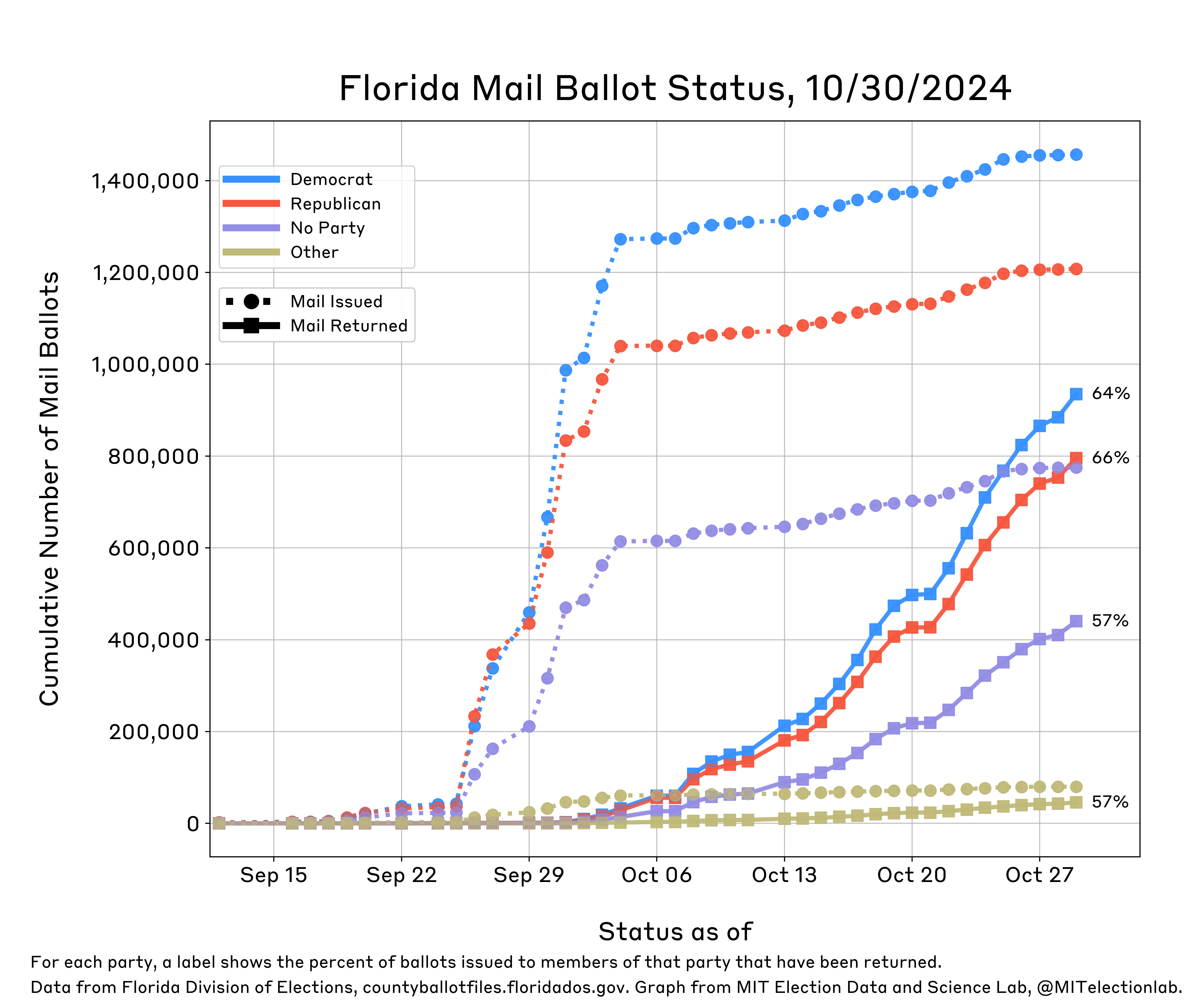
October 29, 2024
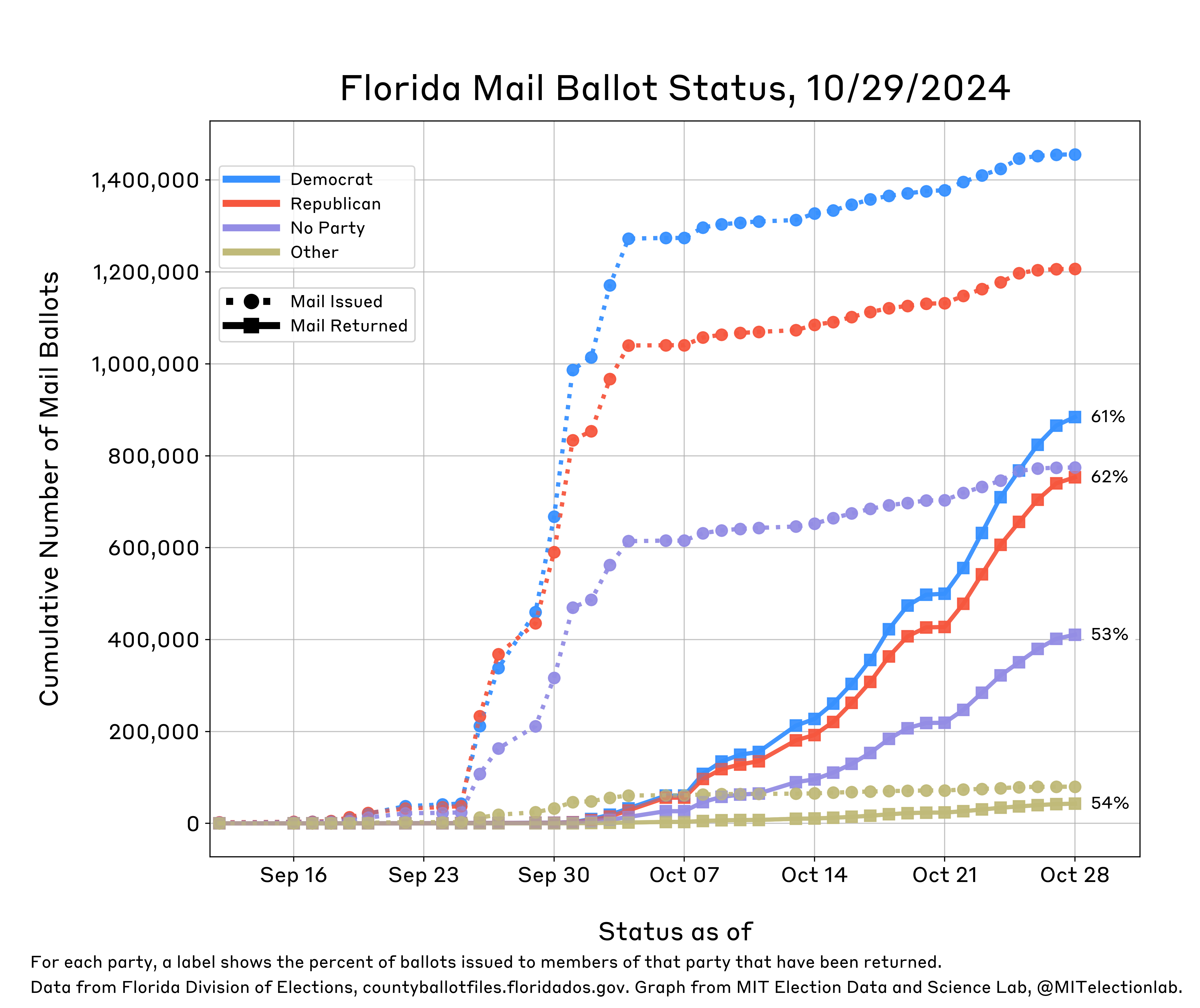
October 28, 2024
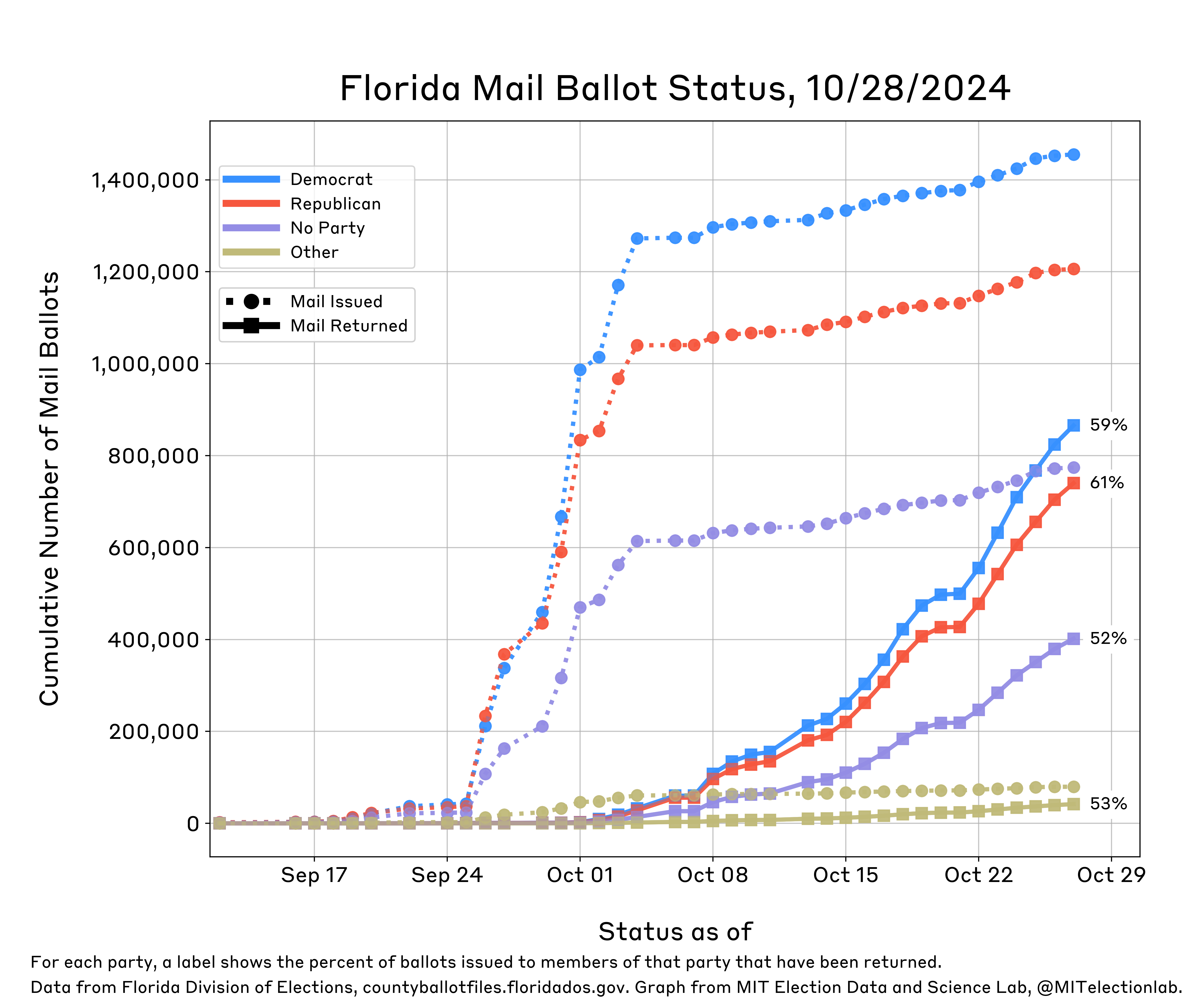
October 25, 2024

October 24, 2024
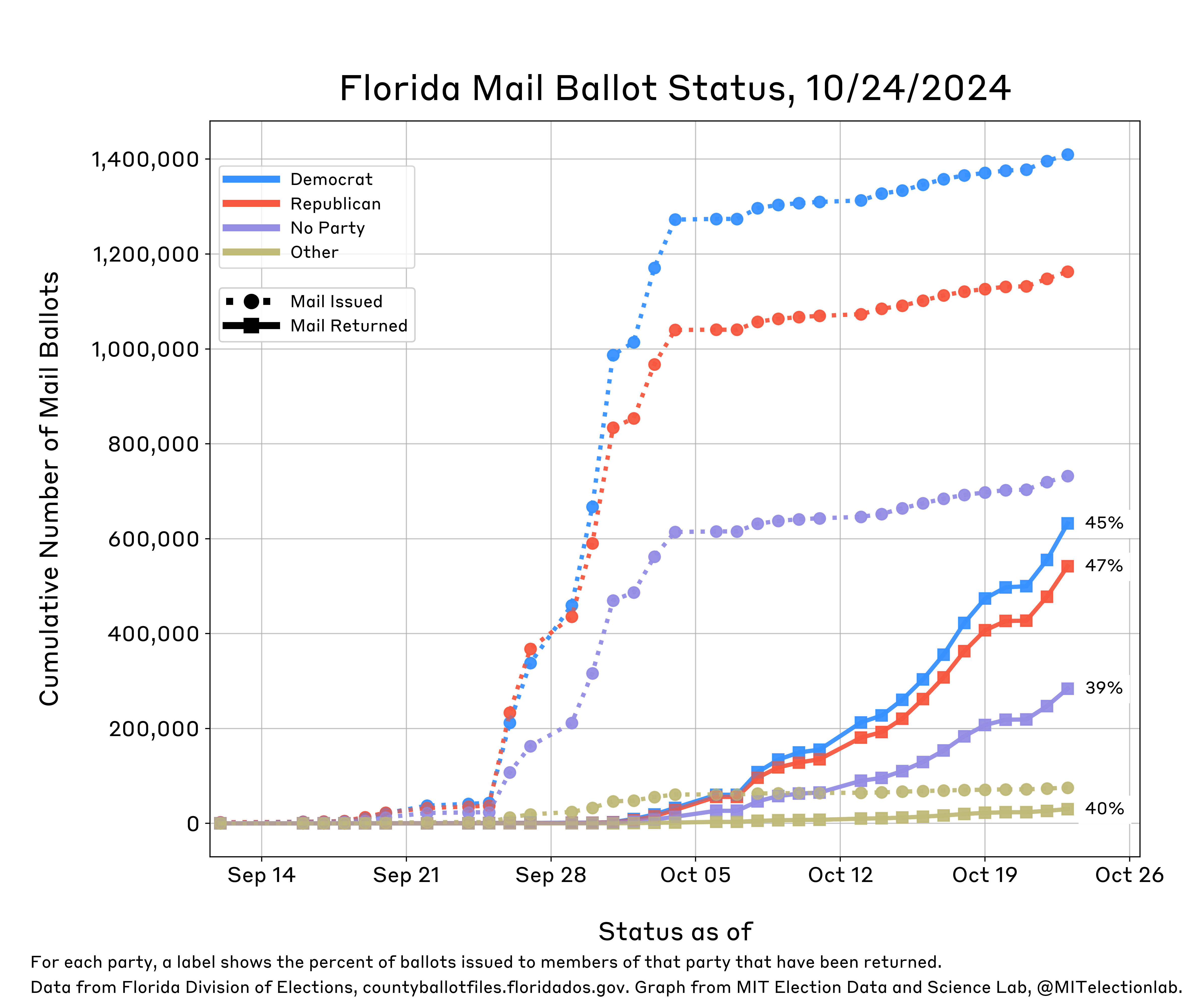
October 23, 2024

October 22, 2024
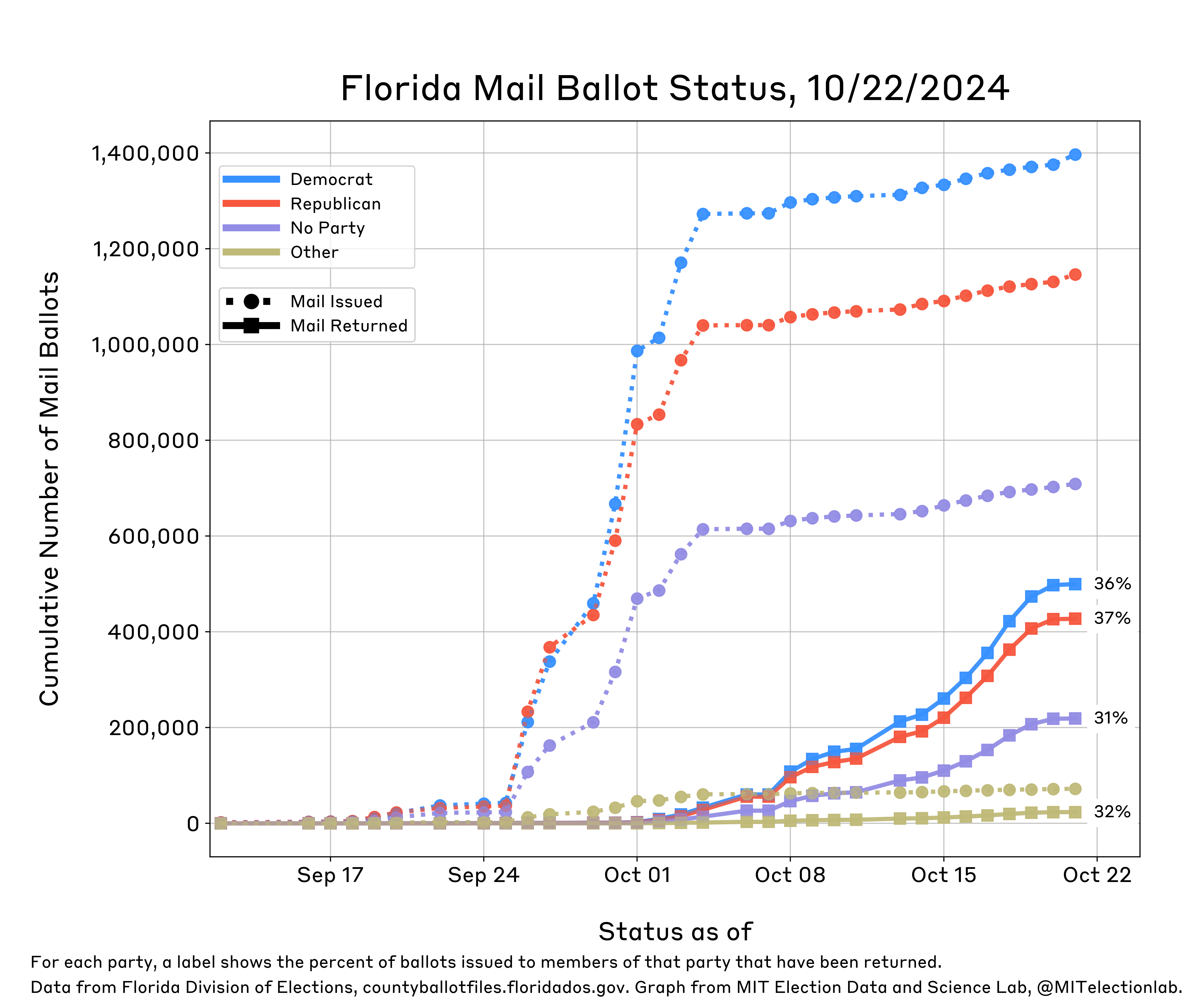
October 21, 2024
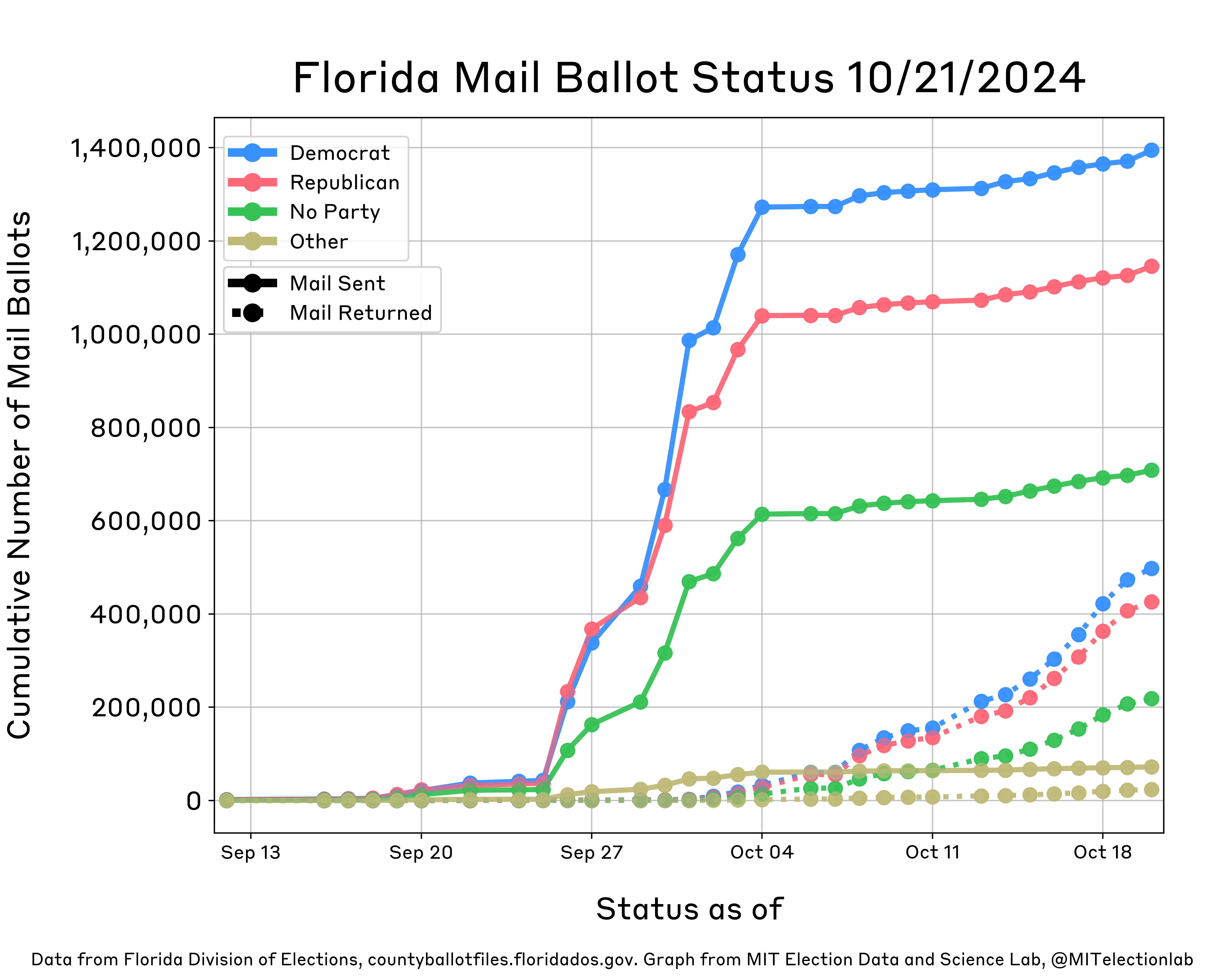
October 18, 2024
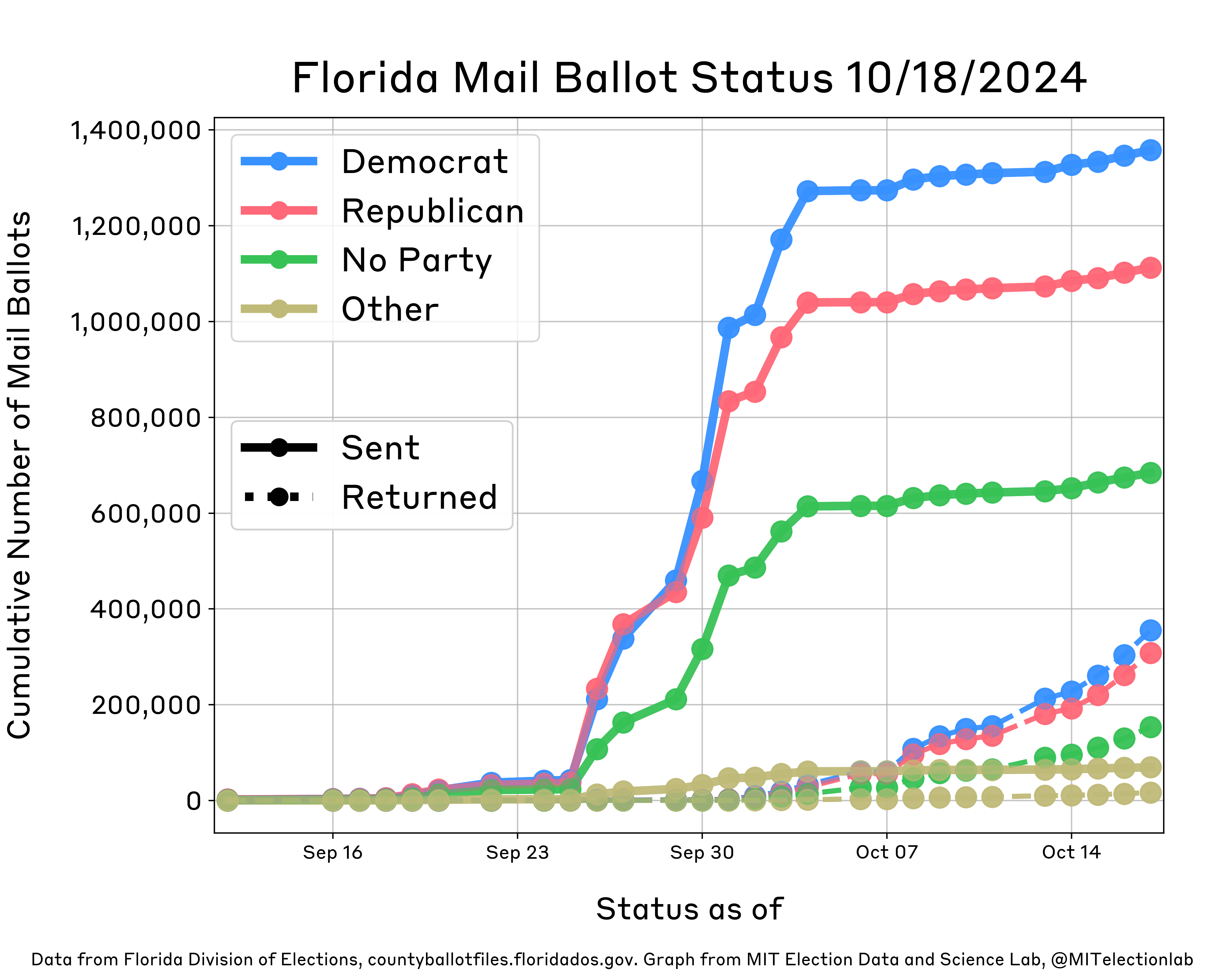
October 17, 2024
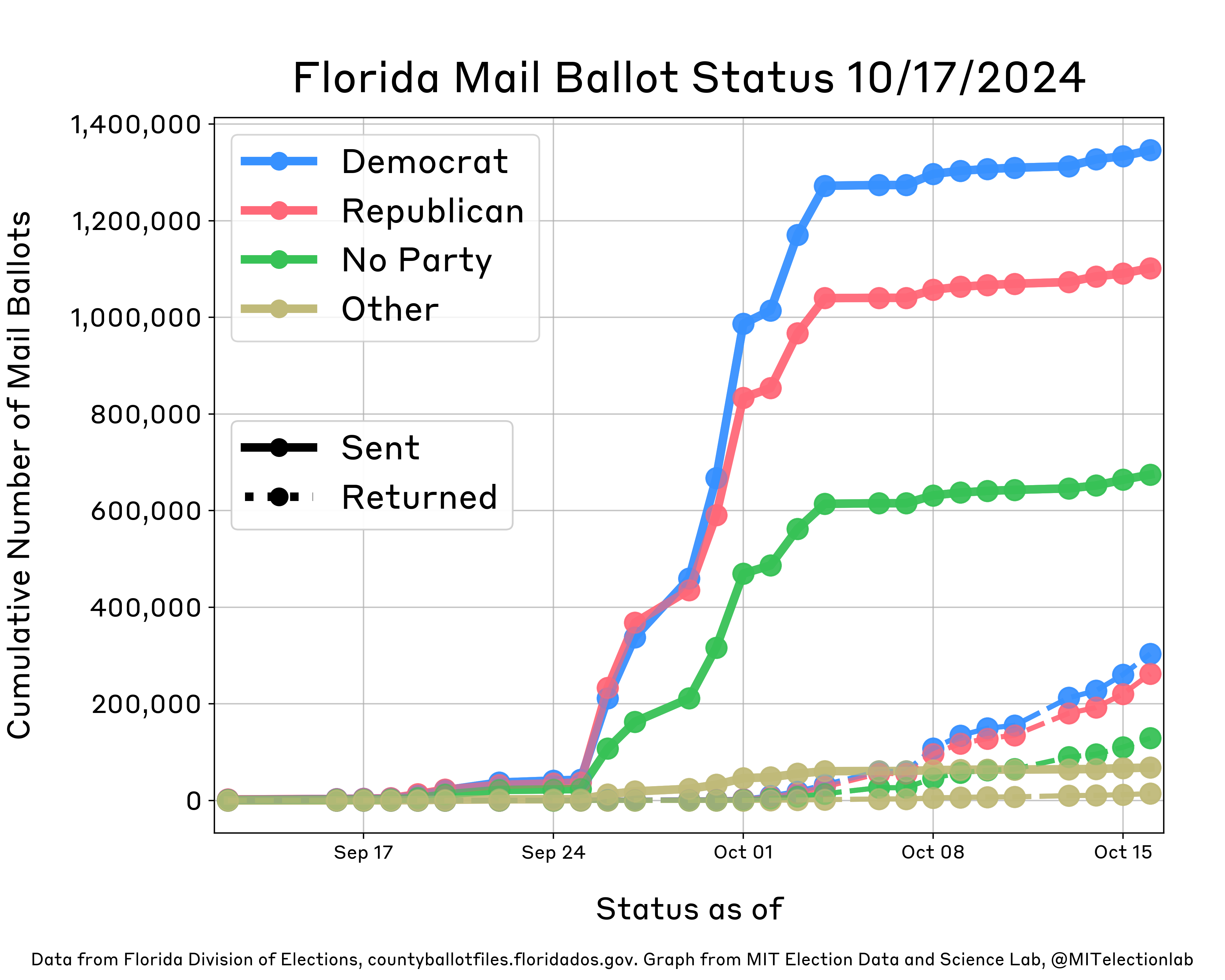
October 16, 2024
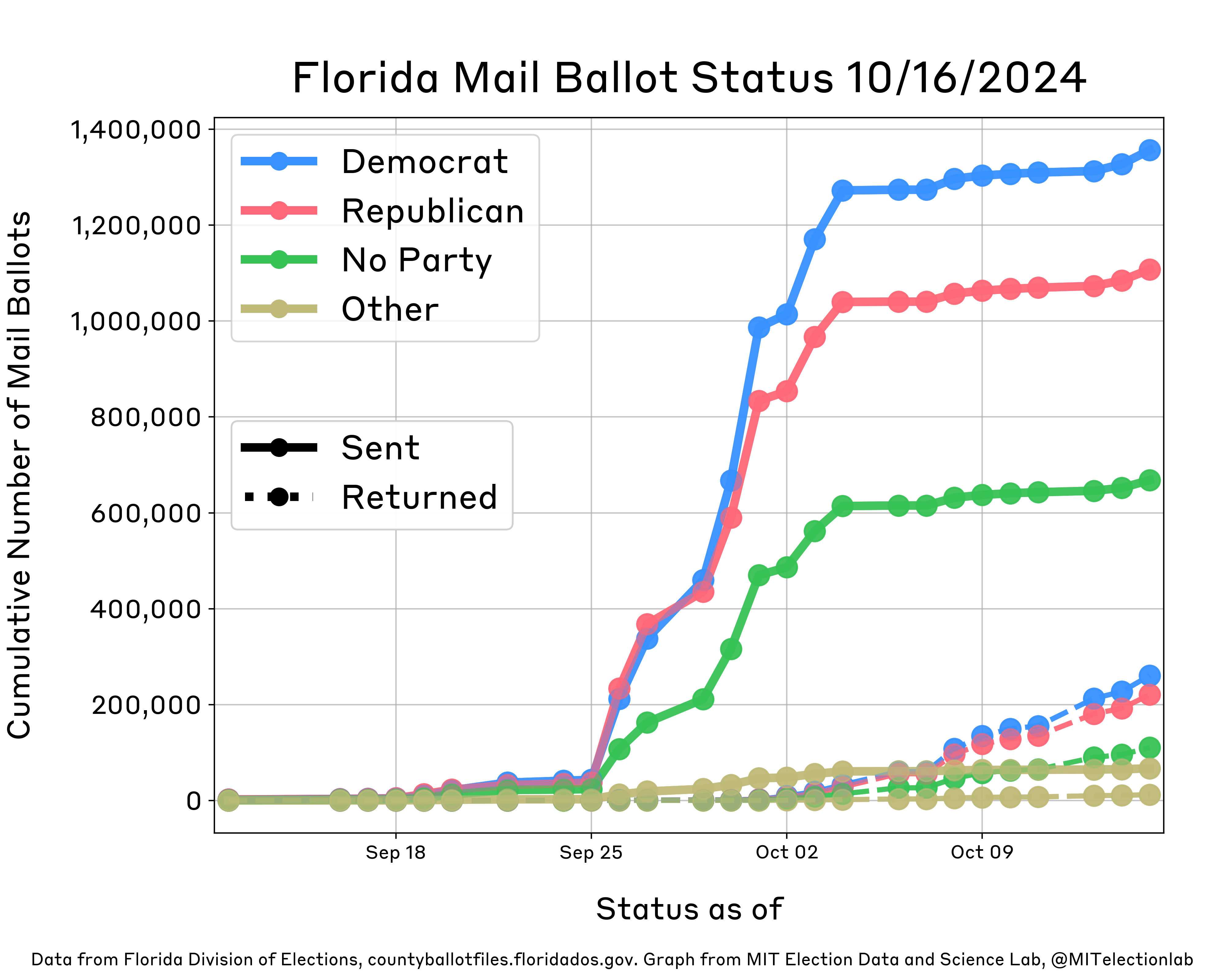
October 15, 2024
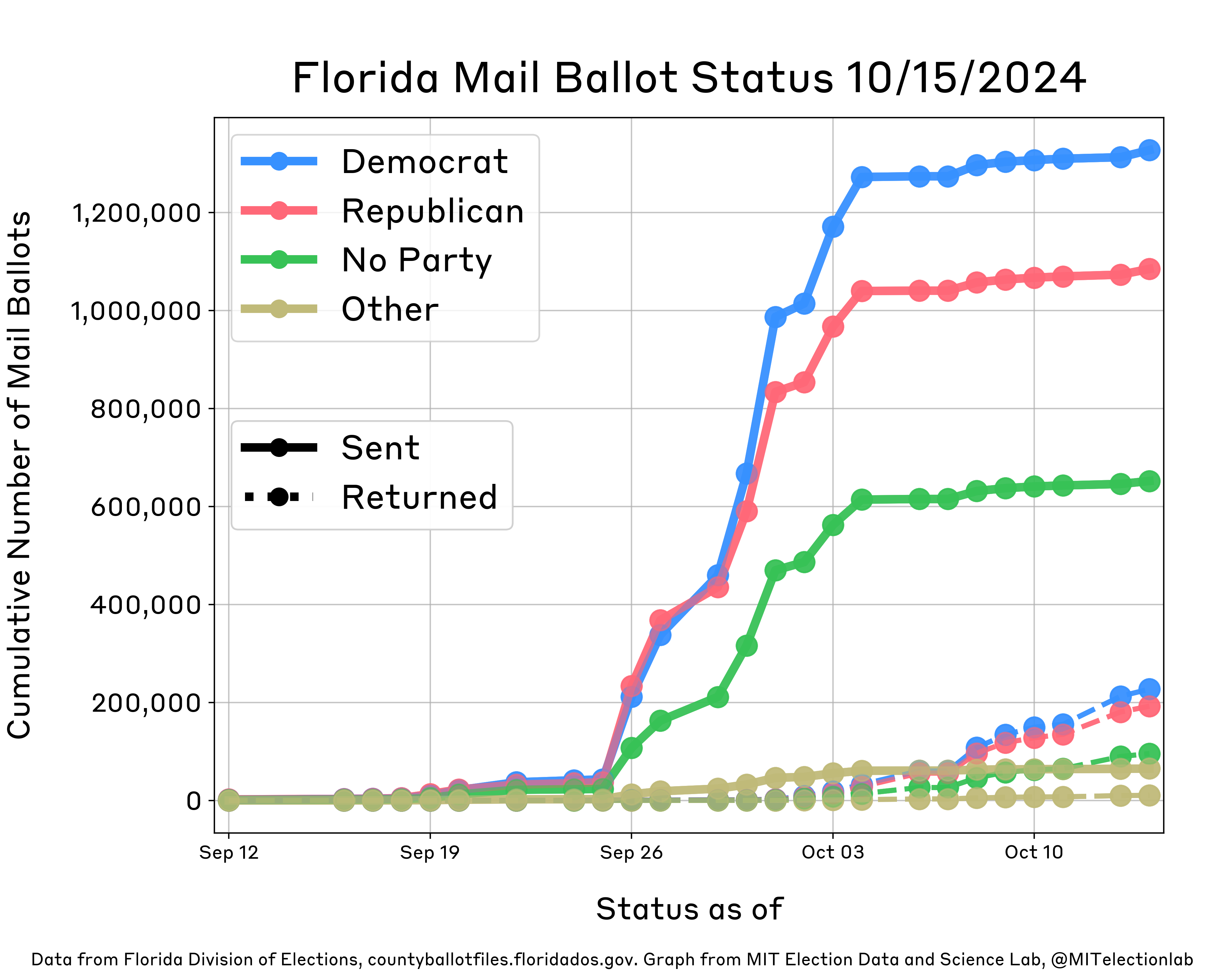
October 11, 2024
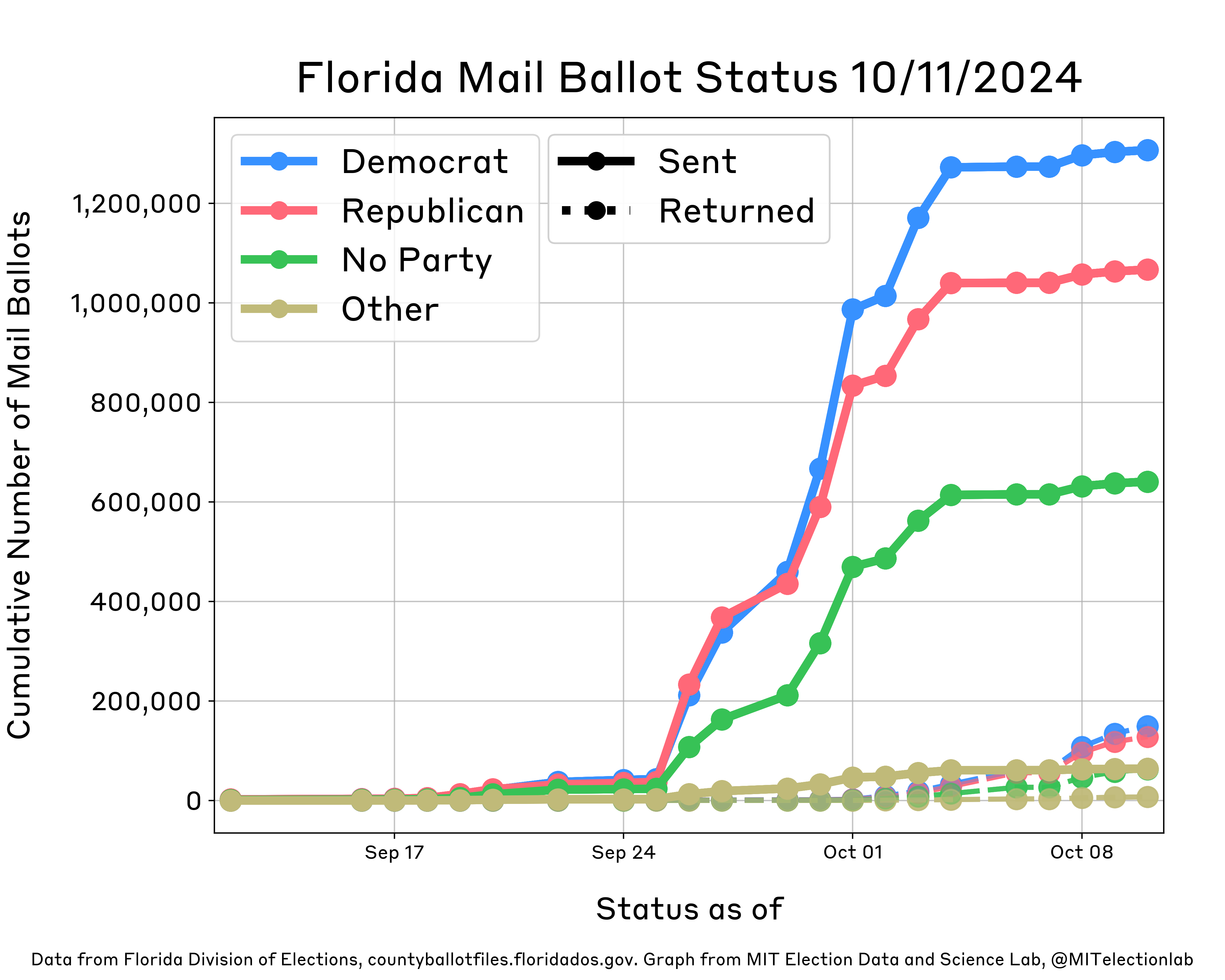
October 10, 2024

October 9, 2024

October 8, 2024

October 7, 2024
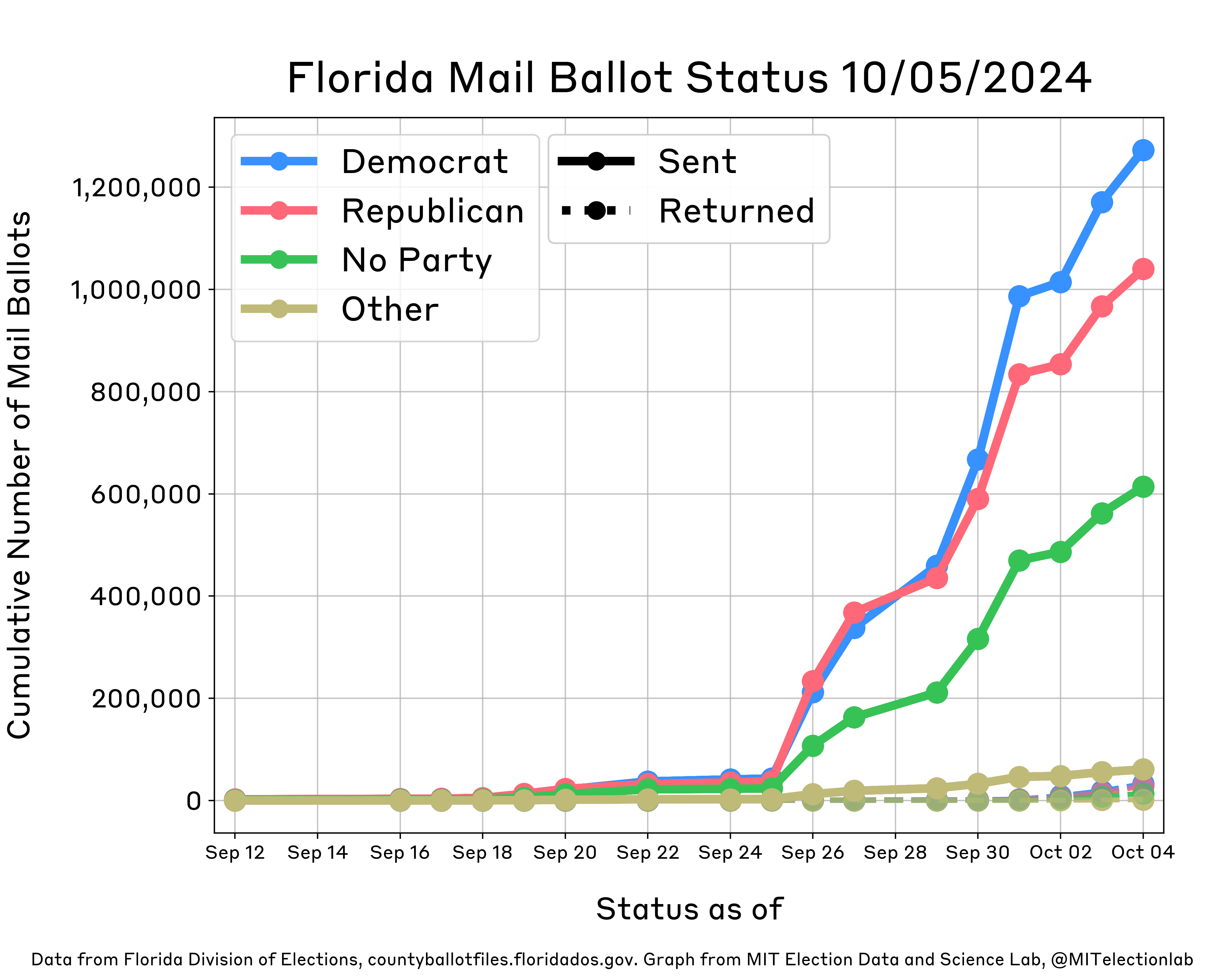
October 4, 2024
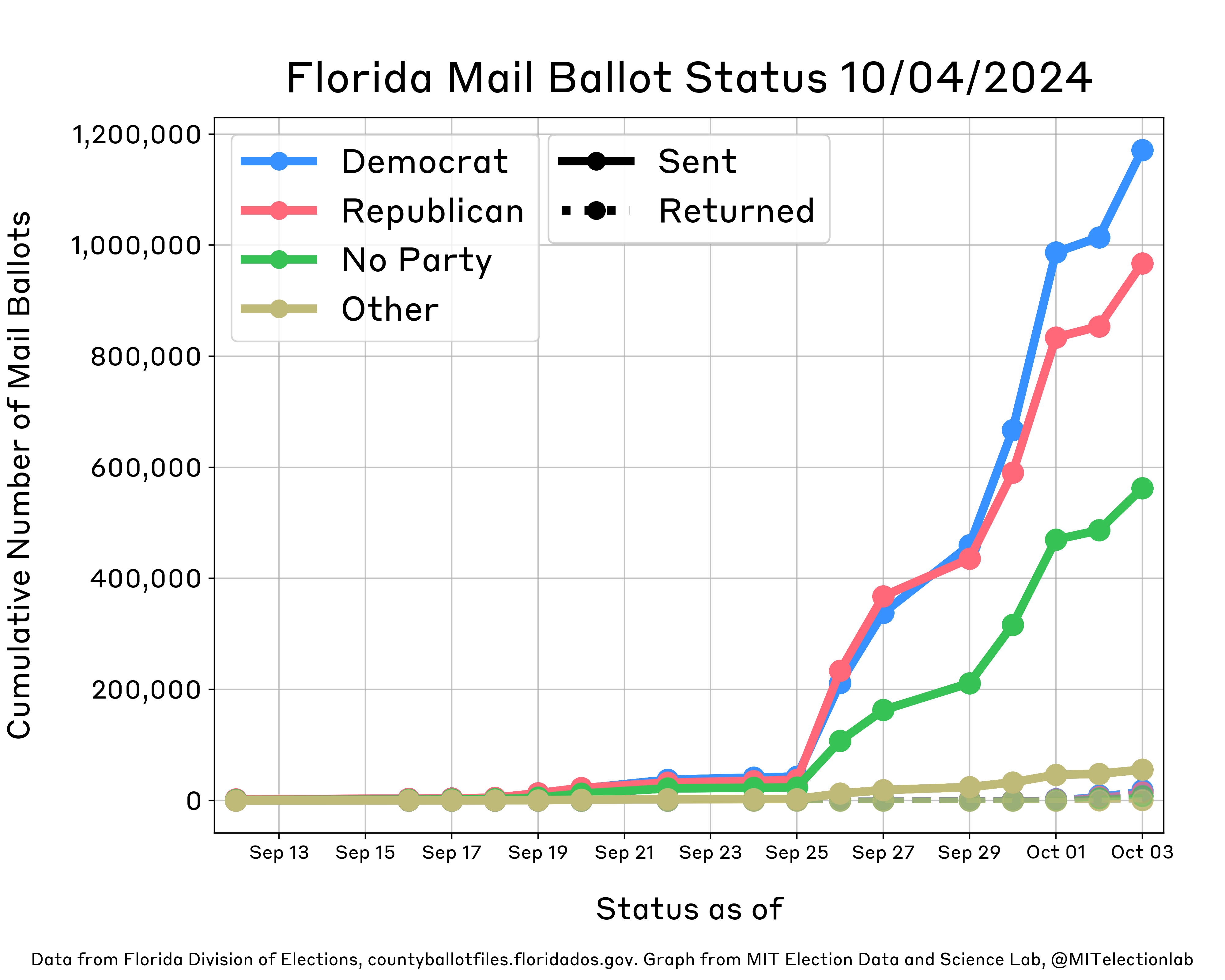
October 3, 2024

October 2, 2024
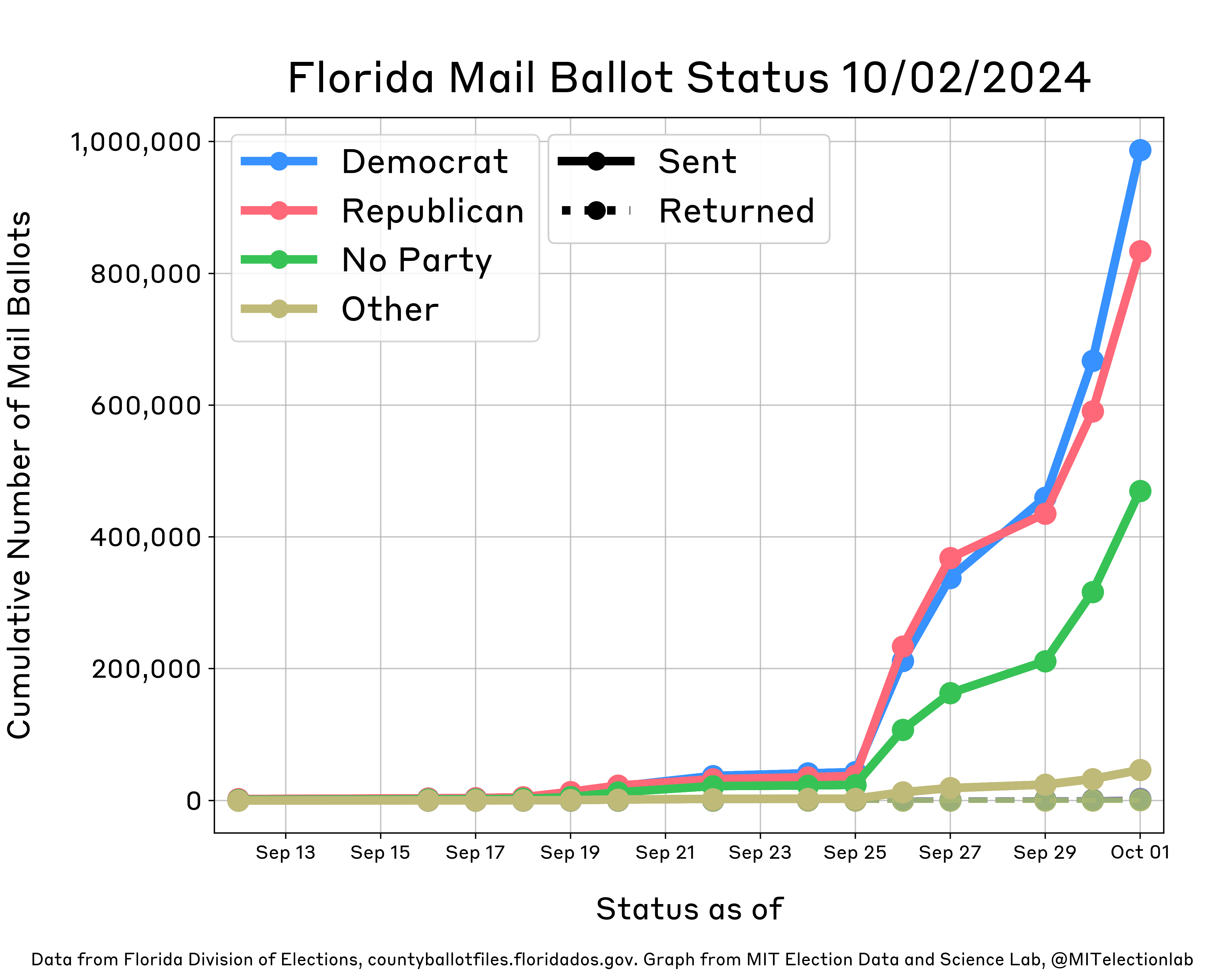
October 1, 2024

September 30, 2024
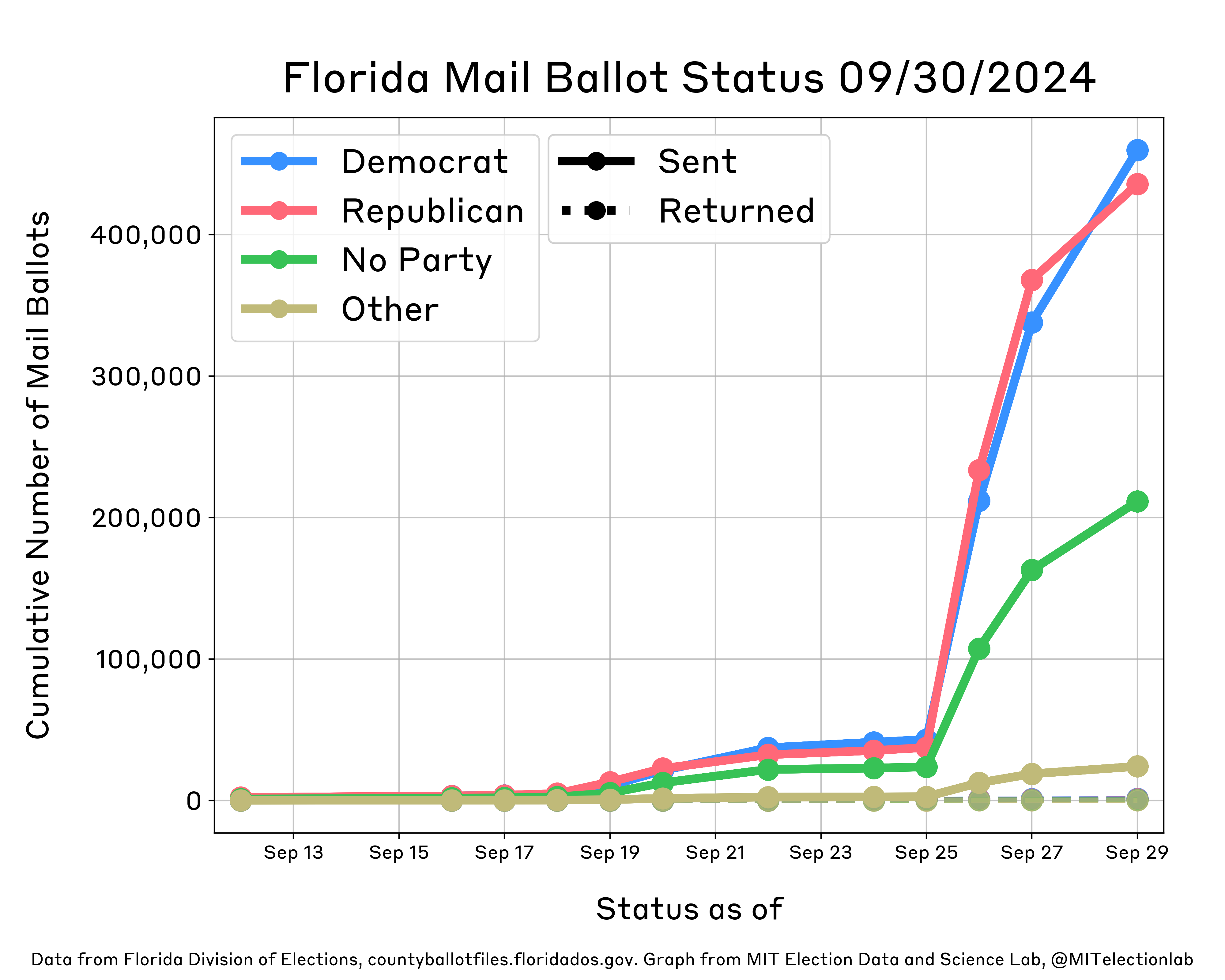
September 27, 2024
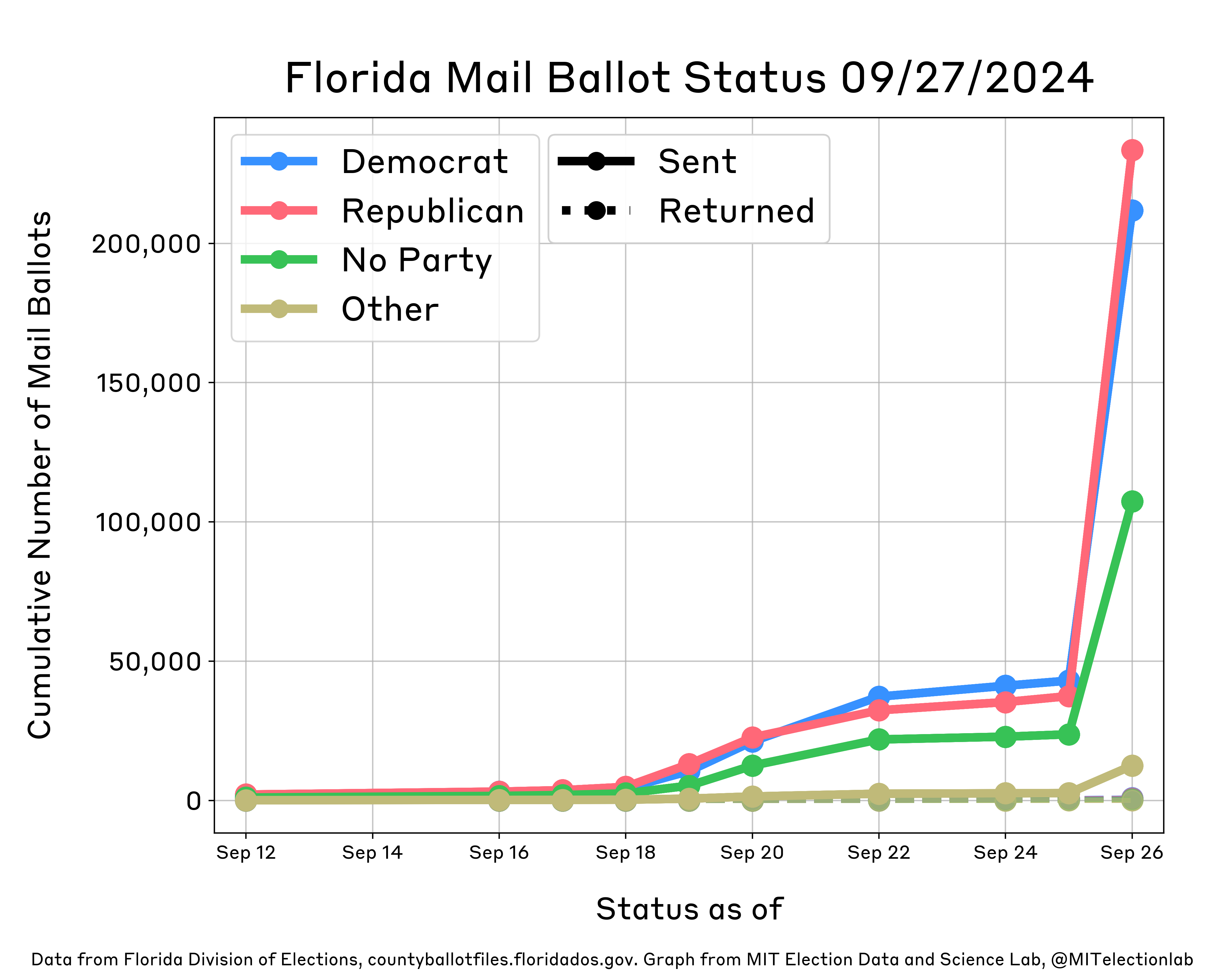
September 26, 2024
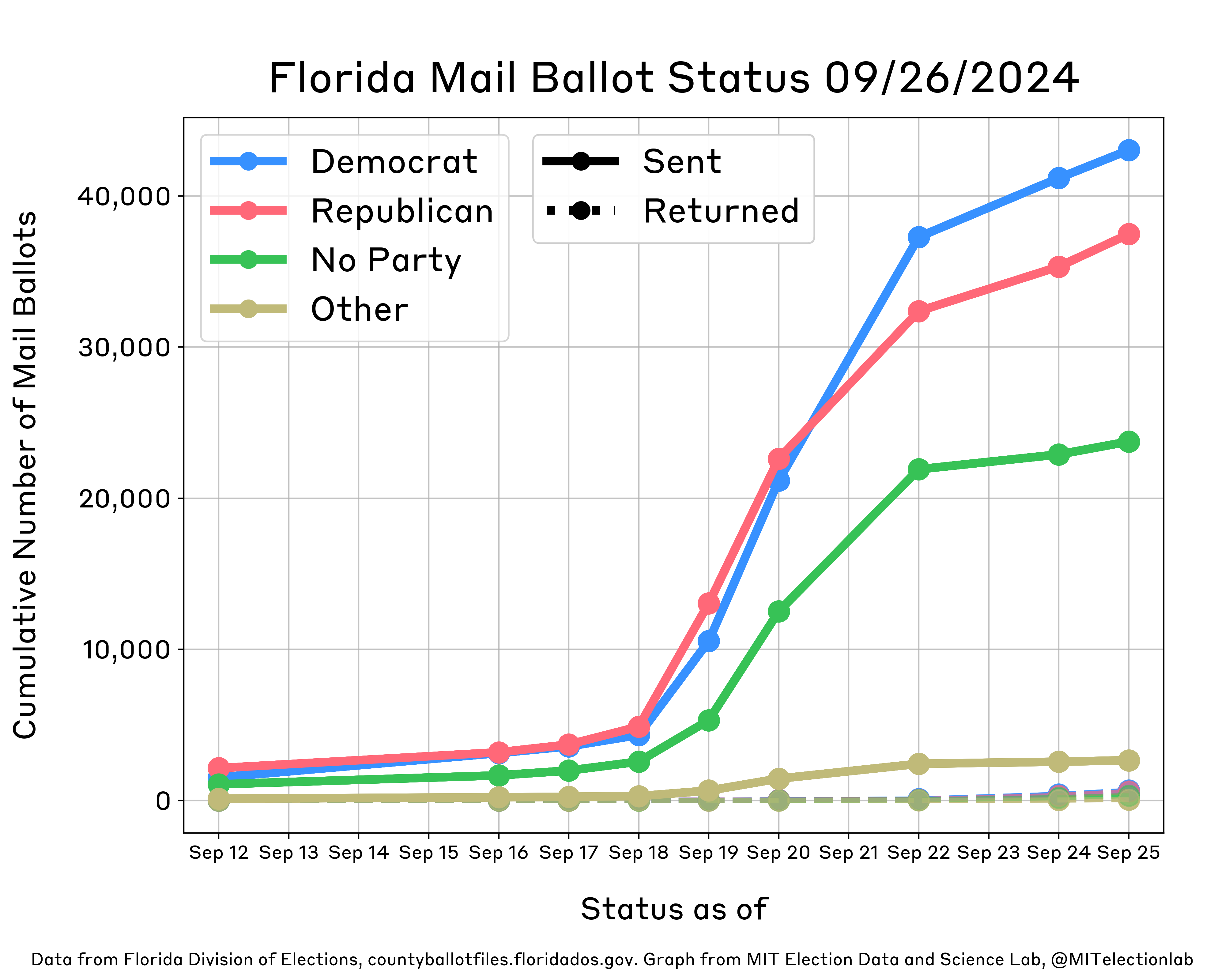
September 25, 2024
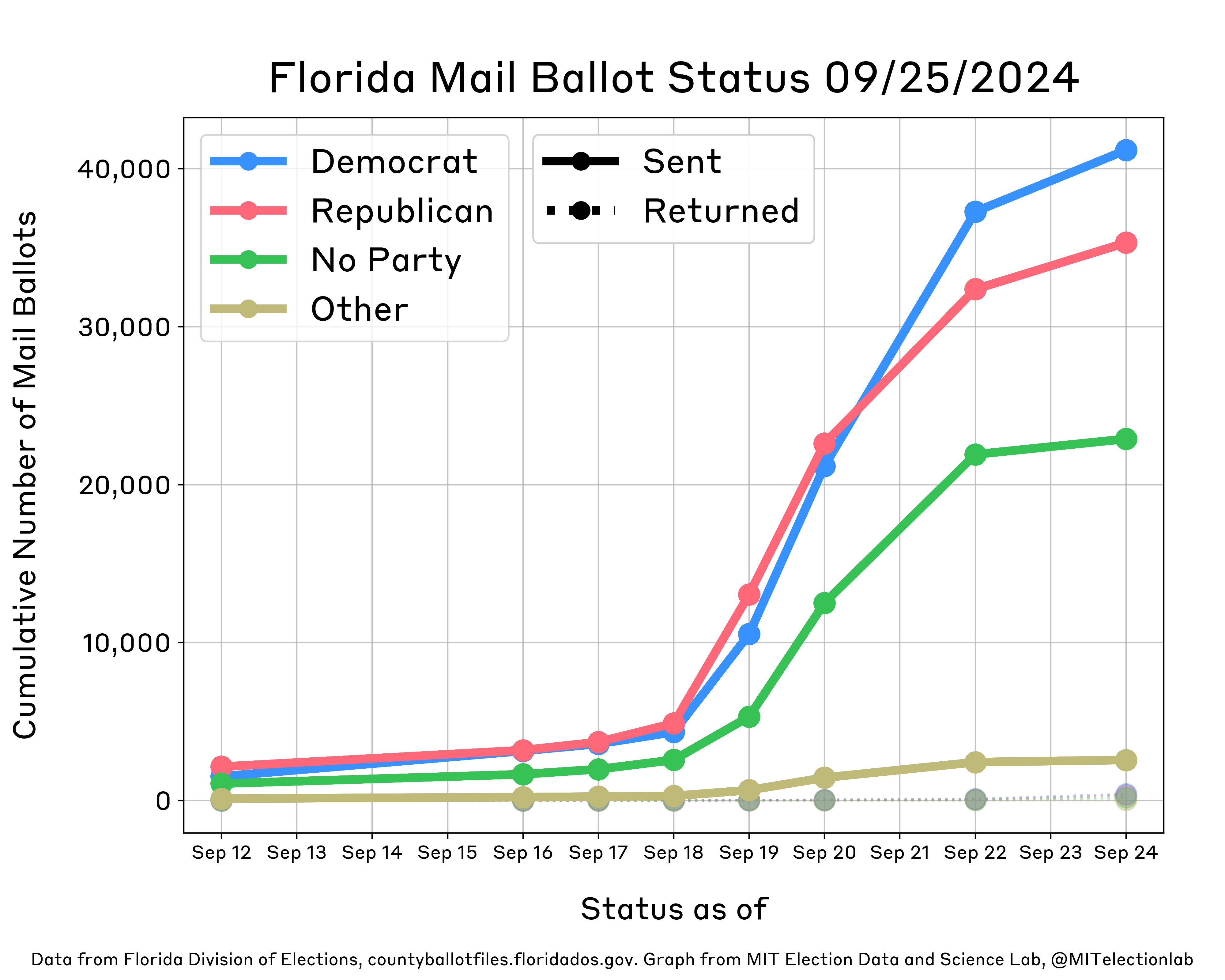
September 23, 2024
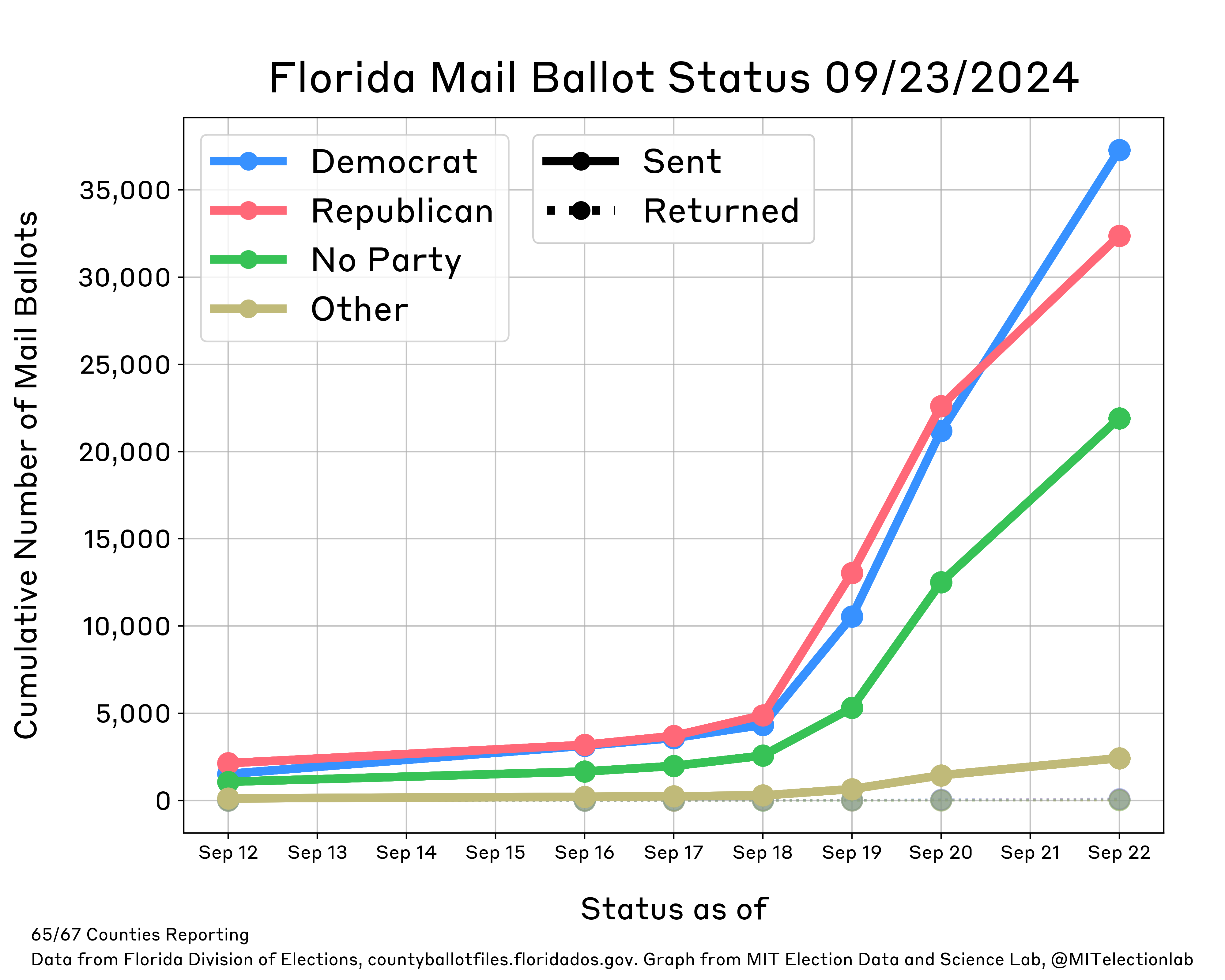
September 20, 2024
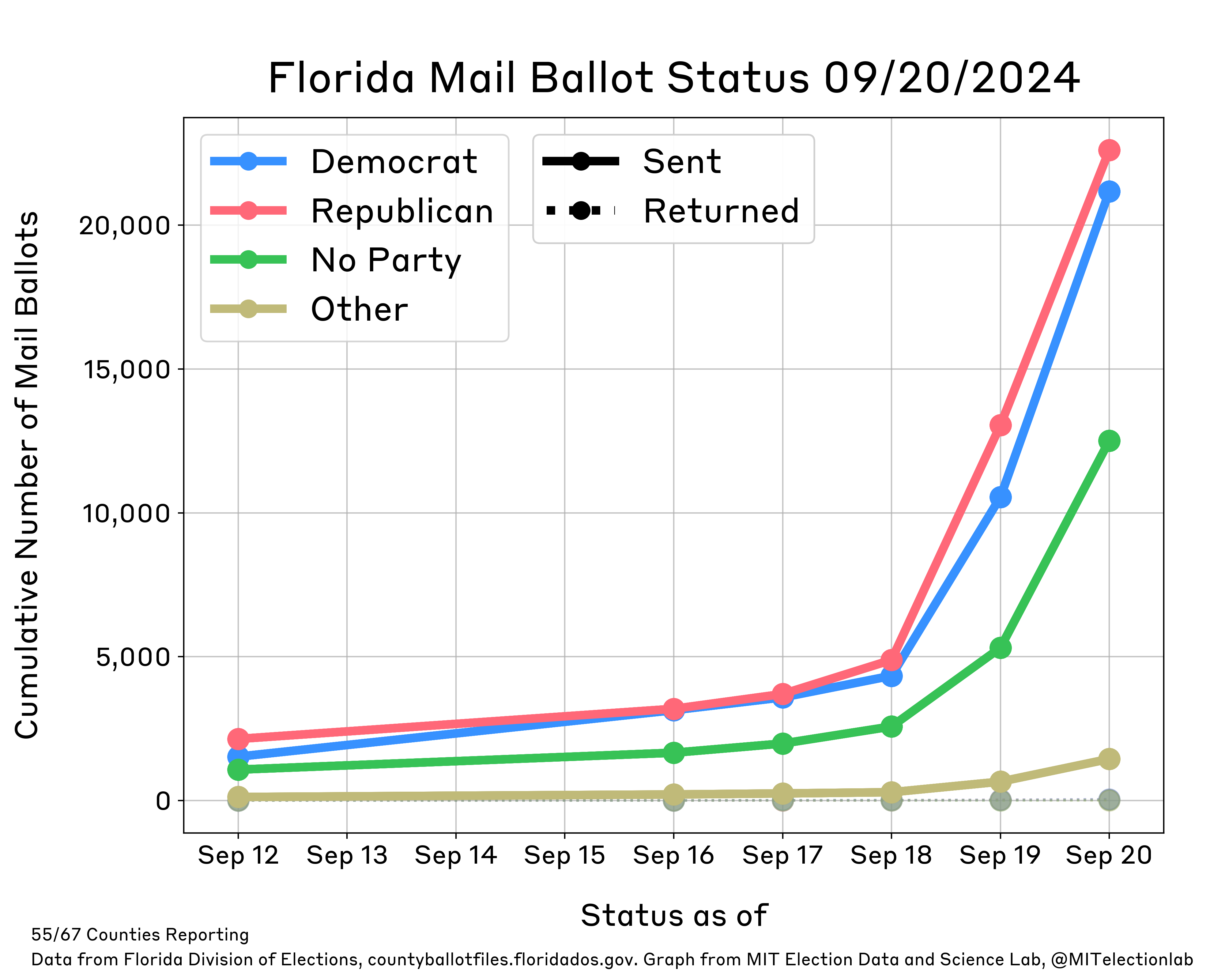
September 19, 2024
